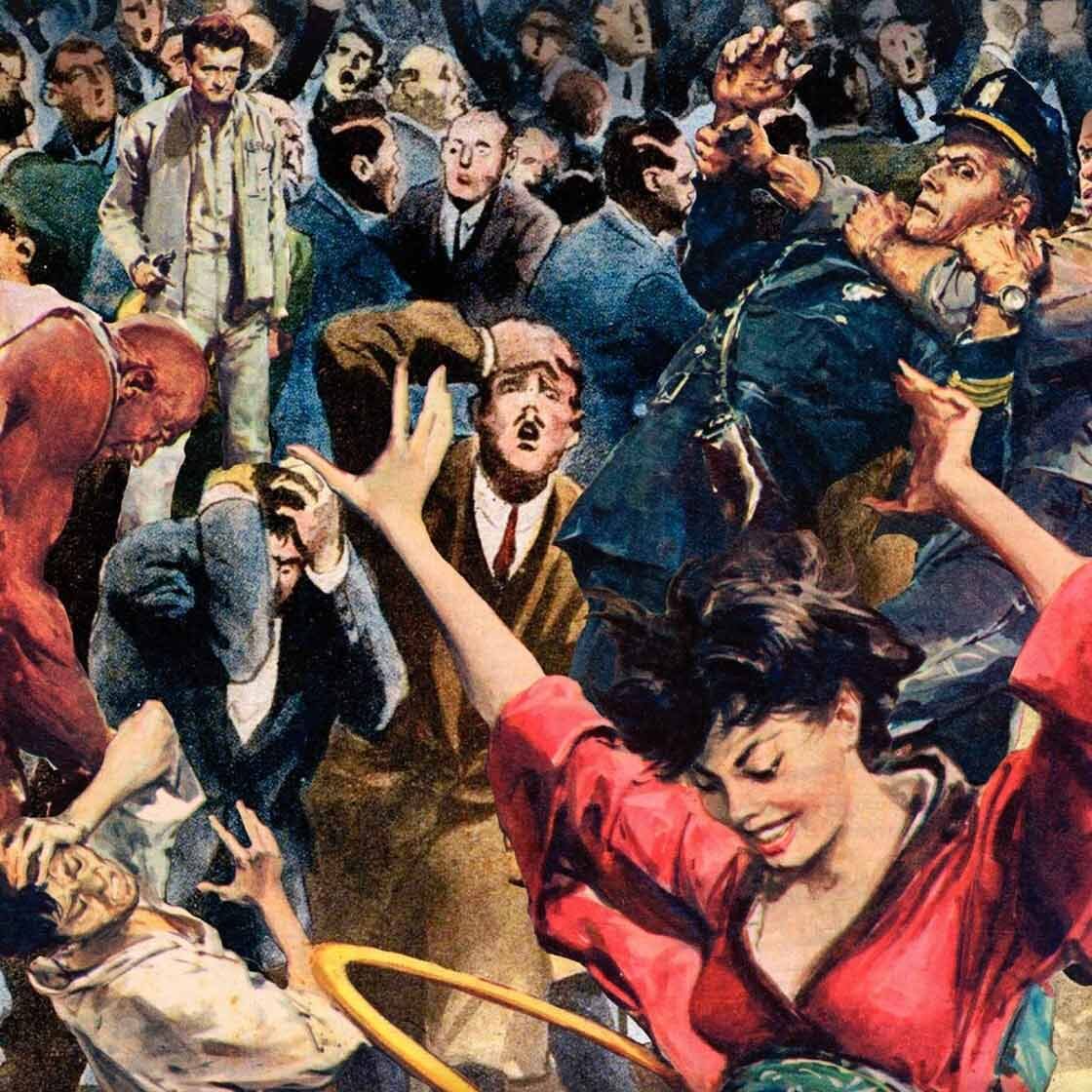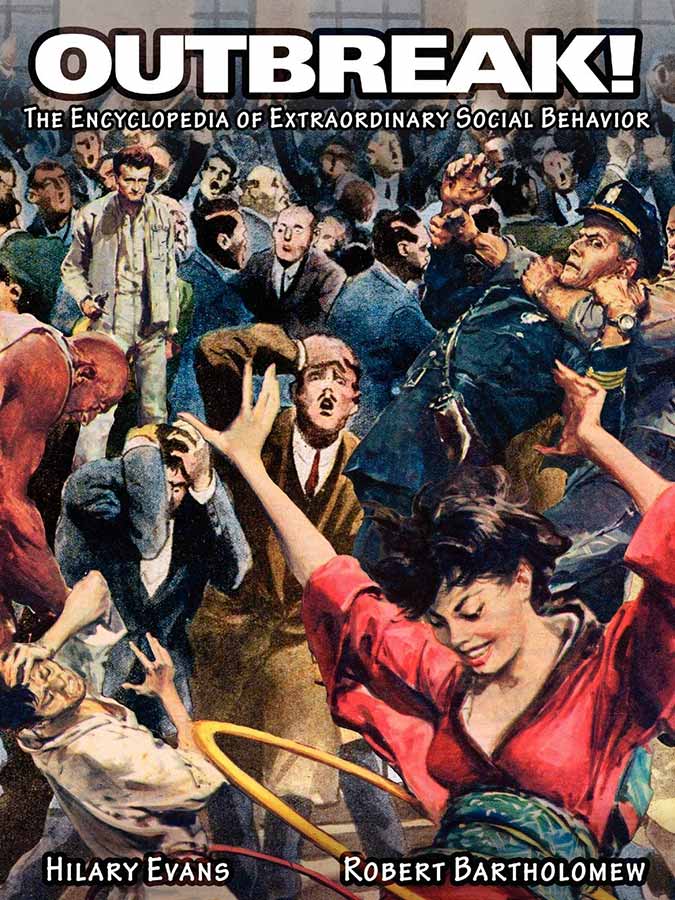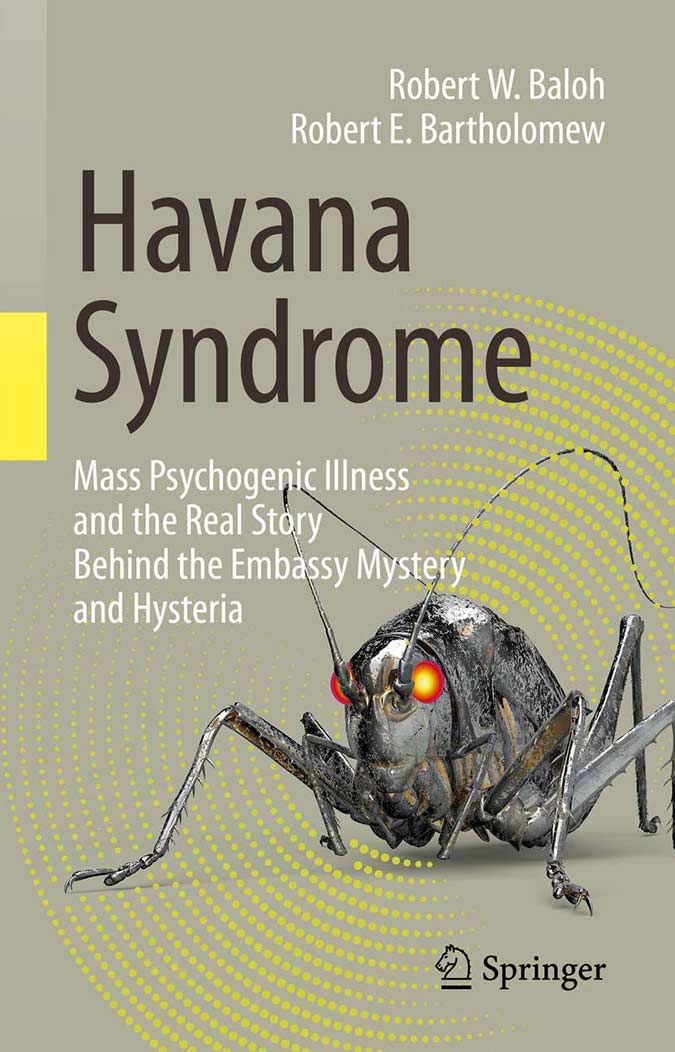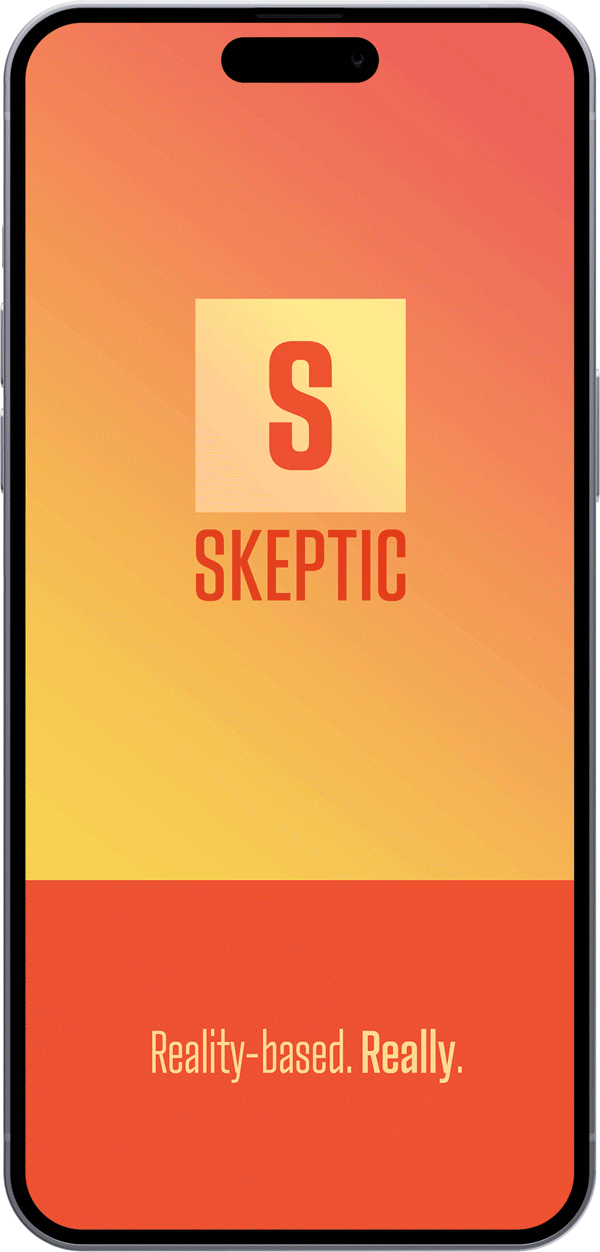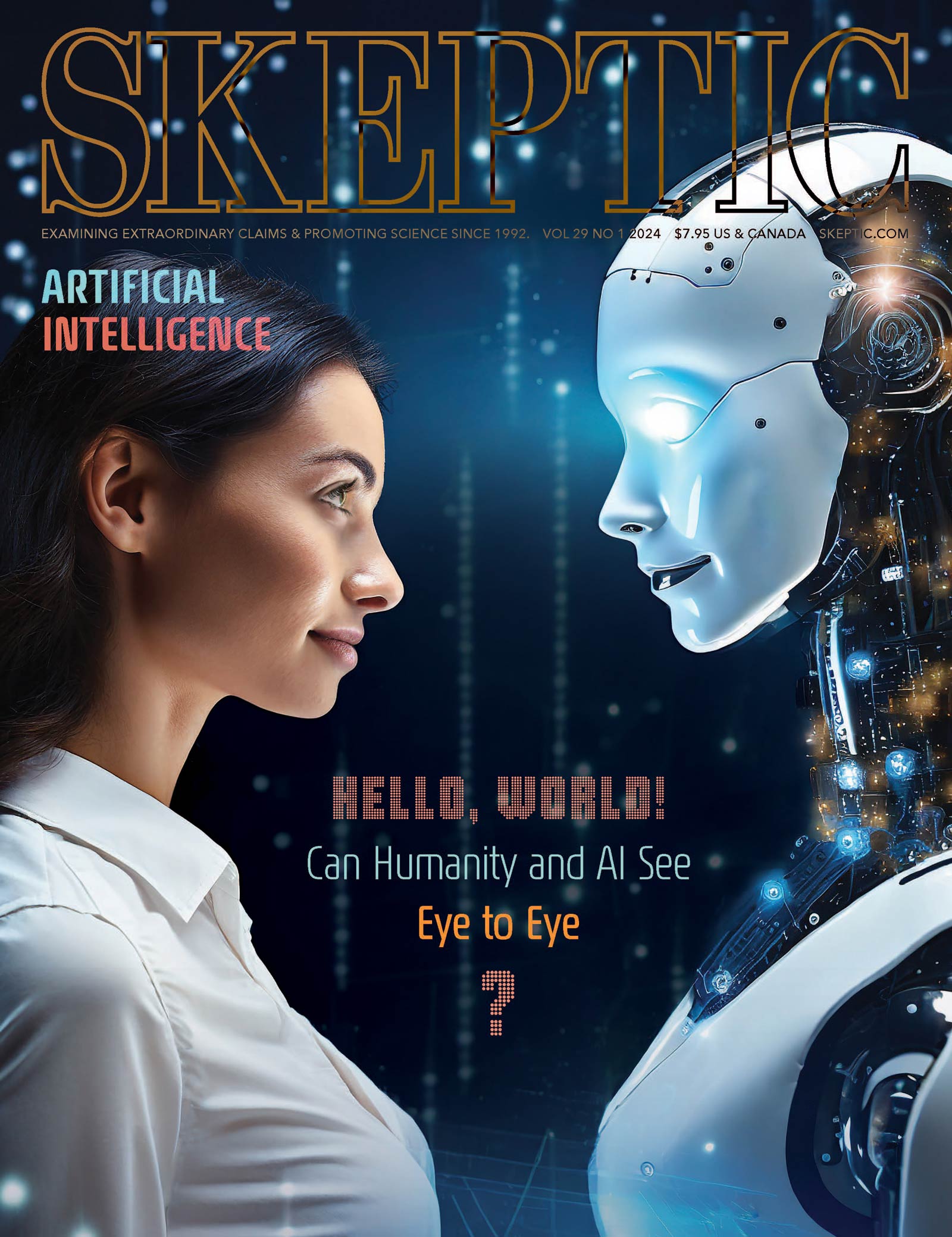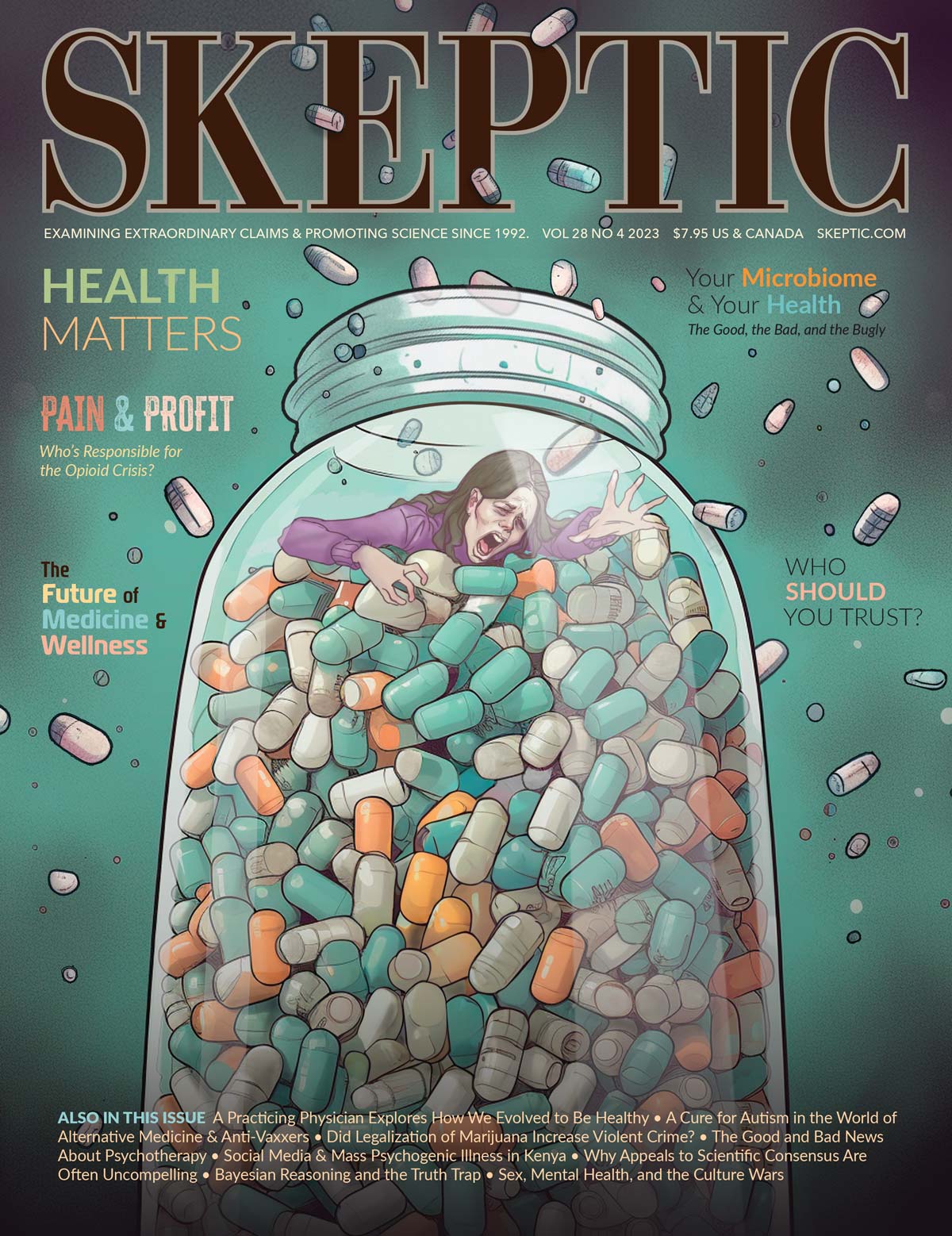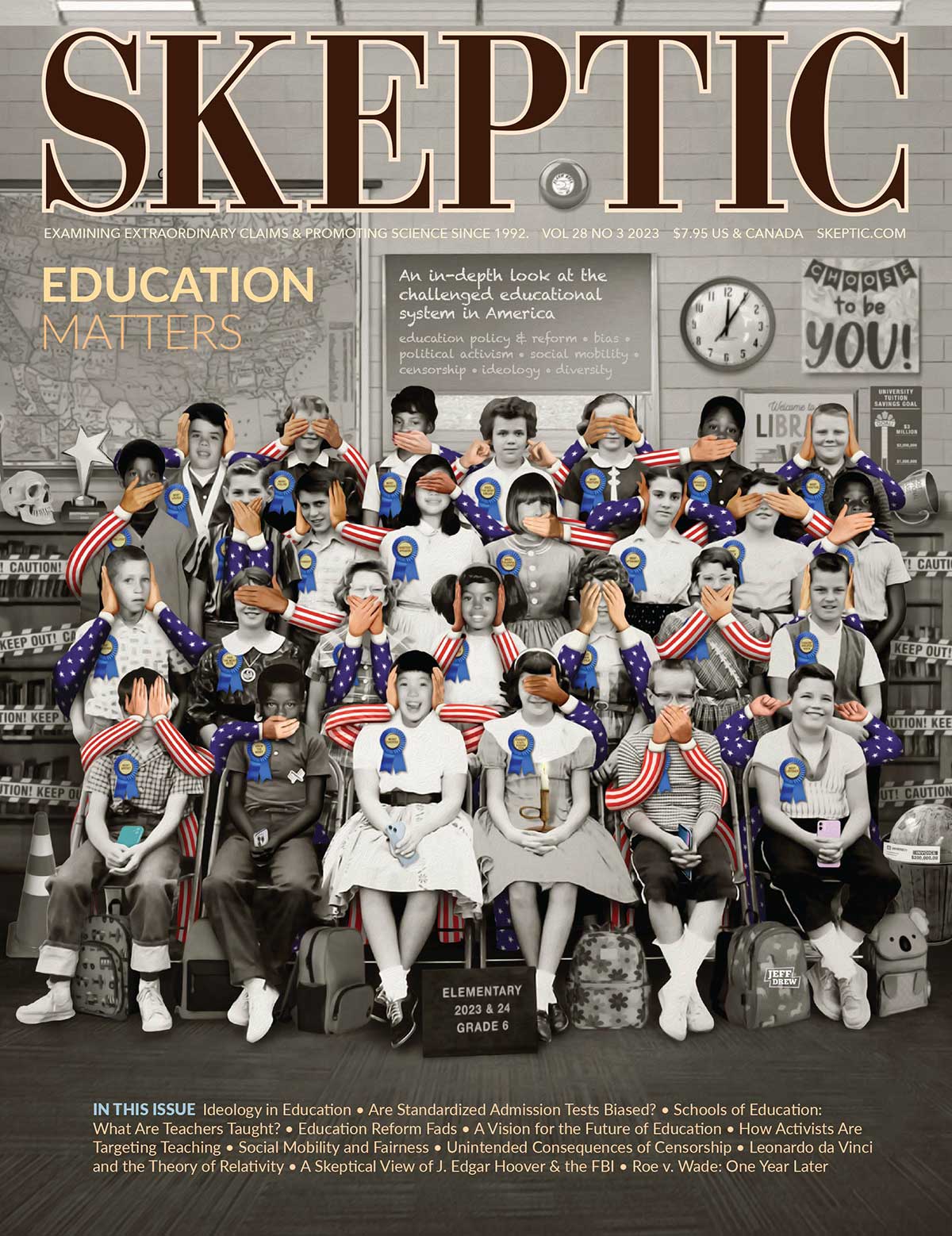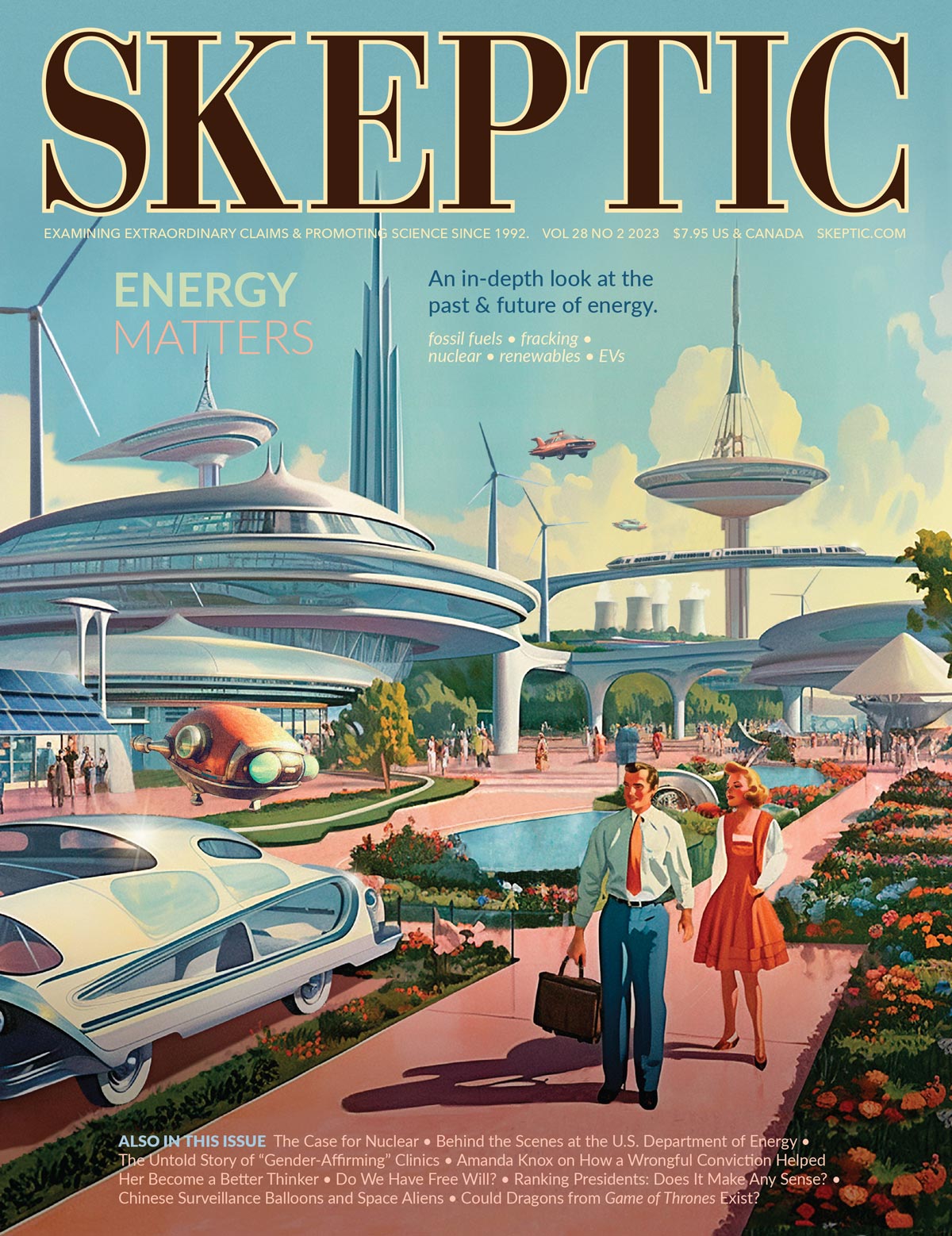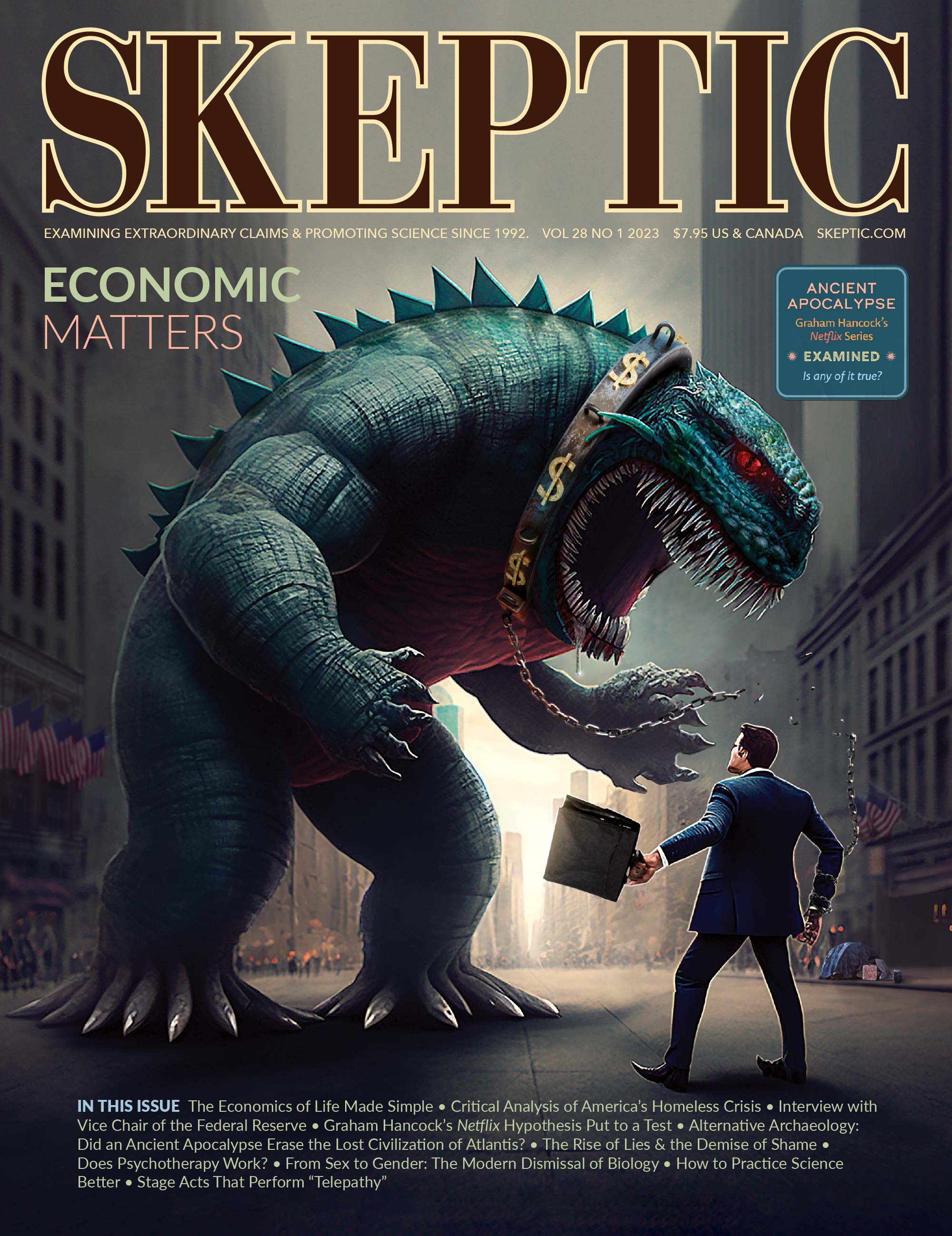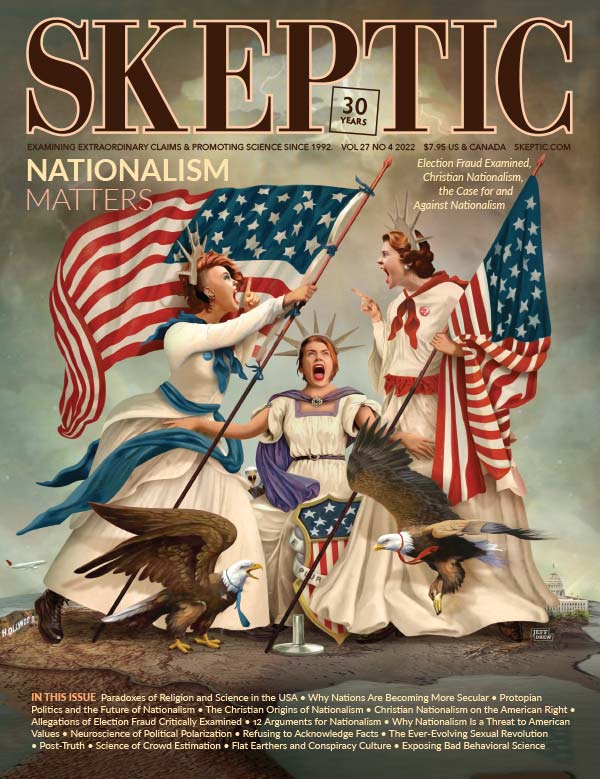In 2019, the U.S. State Department asked the National Academy of Sciences to examine the cause of an array of mysterious health complaints experienced by American embassy diplomats and their families who were stationed in Cuba. Dubbed “Havana Syndrome” in the media, the outbreak began in late 2016 when staff reported hearing strange sounds before feeling unwell. Symptoms included headaches, dizziness, fatigue, ear pain, disorientation, confusion, insomnia and difficulty focusing. Most alarming were the mysterious concussion-like symptoms in the absence of head trauma. Theories ranged from sonic weapons to microwaves, pesticides, and mass hysteria. Topping the list of suspected culprits: Russia, China, and Cuba.
In early December 2020, a copy of the Academy’s report was leaked to the media, after which they quickly made the study public.1 Their findings surprised many scientists who had been following the case, by embracing one of the most exotic of explanations: microwaves. Committee chair David Relman concluded that the most plausible explanation was a “directed radio frequency energy attack” which could explain many of the symptoms. Scientists have long been aware of a phenomenon known as “the Frey effect,” where pulsed microwave beams aimed at a person’s head are known to produce clicking sounds. Relman wrote that “If a Frey-like effect can be induced on central nervous system tissue responsible for space and motion information processing, it likely would induce similarly idiosyncratic responses… [including] alterations in brain functioning.”2
The Frey effect is named after Allan Frey, a pioneer in radiation research. But there are many problems with the explanation. It is highly speculative, and none of the panel members appeared to be experts on the biological impact of microwaves and the Frey effect. Someone who is a specialist on the effect, University of Pennsylvania bioengineer Kenneth Foster, is critical of the report, observing that there is no evidence that the Frey effect can cause injuries. Furthermore, the effect requires a tremendous amount of energy to create a sound that is barely audible.3 Foster should know, in 1974, he and Edward Finch were the first scientists to describe the mechanism involved in the effect while working at the Naval Medical Research Institute in Maryland.4
Foster views any link between his eponymous effect and Havana Syndrome as pure fantasy. “It is just a totally incredible explanation for what happened to these diplomats…. It’s just not possible. The idea that someone could beam huge amounts of microwave energy at people and not have it be obvious defies credibility.”5 The former head of the Electromagnetics division of the Environmental Protection Agency, Ric Tell, also views the microwave link as science fiction. Tell spent decades working on standards for safe exposure to electromagnetic radiation, including microwaves. “If a guy is standing in front of a high-powered radio antenna — and it’s got to be high, really high — then he could experience his body getting warmer,” Tell said. “But to cause brain-tissue damage, you would have to impart enough energy to heat it up to the point where it’s cooking. I don’t know how you could do that, especially if you were trying to transmit through a wall. It’s just not plausible,” he said.6
Hiding in Plain Sight
So, if Havana Syndrome is not caused by microwaves, what could it be? The panel viewed the possibility of mass hysteria as unlikely but could not rule it out. The report states that there was insufficient information to determine the social patterning of symptoms as “the committee received no epidemiological evidence about patterns of social contacts that would permit a determination about possible social contagion.” They specifically noted that they were unaware of any index case (the first person to be affected) and subsequent cases after that.
This is where the story takes a strange twist: the social patterning of the early stages of the outbreak were outlined in the 2020 book, Havana Syndrome, co-authored by myself and Robert Baloh and published in May,7 and in two lengthy reports by journalist Timothy Golden in 2018 and 2019. Golden talked to Embassy diplomats and looked at government documents related to the case.8 None of these publications were cited in the report. Apparently, they were unaware of their existence — which is mystifying because as early as November 5, 2019, the Chief Medical Officer at the State Department was made aware of the book and its contents.9 Just imagine, a panel of scientists is convened to investigate the cause of a mysterious illness outbreak.
The only comprehensive study of the case is contained in a book published by a leading scientific publisher and is written by a preeminent neurologist who created some of the tests that were given to the affected diplomats in order to assess their condition — and the panel is not aware of the study. Equally baffling, a prominent journalist published two lengthy, detailed reports, and they too were ignored. These reports appeared in a major media outlet, Propublica, and were written by Timothy Golden, a winner of two Pulitzer Prizes. It just so happens that these studies contain detailed information on what the panel claims they could not find: the social patterning of the outbreak, including how it began and spread through the diplomatic community in Cuba.
This is simple negligence on the part of the National Academy of Sciences.
Key Information Omitted
The report notes that diplomats often felt unwell after hearing mysterious sounds, which lends credence to suggestions that they were attacked or exposed to an unknown energy source. However, the committee makes no mention of the numerous recordings of “attacks” that were made by various diplomats and were later analyzed. Several were examined by the Cuban investigation committee, others were scrutinized by the FBI, while a third was analysed by biologists. Each turned out to be insect sounds.10
There is also a concern that those overseeing the panel may have had motives that were driven more by politics than science. For instance, the former President of the Royal College of Psychiatrists told me that he was invited to join the panel, only to be dropped. The reason: a radio interview he gave in which he espoused the likelihood that Havana Syndrome was psychogenic. This suggests the possibility of a bias against a psychological explanation. This is not only more likely and is grounded in known science, it is by far the more embarrassing explanation for the physicians at the State Department who, early in the outbreak, may have mistaken the sounds of crickets and cicadas for an attack by a hostile foreign power. Curiously, it is the State Department who commissioned the study. Coincidence? While this is speculation, what is not conjecture is the glaring failure of the panel to evaluate evidence that was laying in plain sight.
Golden provides a rich description of the early social patterning and spread of Havana Syndrome. Once the State Department had accepted the sonic device explanation, U.S. diplomats who were being posted to Havana “were quietly warned they could face a mysterious threat that was causing American Foreign Service officers to fall ill, some with long-lasting symptoms.”11 Those diplomats who were about to be posted to Havana were even played audio recordings made by staff in Cuba, of the mysterious sounds that had accompanied their symptoms. These recordings were later identified as crickets and cicadas. These actions encouraged more “attacks” because new Embassy staff were on the lookout for sounds that resembled these very insects. As one Embassy worker told us: “If, prior to deploying to Havana, a government official were given this recording and told it was the hallmark of a debilitating attack, it is completely understandable that said official would arrive in Havana, hear the insects not long after, and fear the worst.”12
By counseling future Embassy staff over the perceived threat, an expectation of illness was created, and with it, a frame through which future sounds and symptoms were to be interpreted. This is a classic set-up for an outbreak of mass psychogenic illness. ![]()
‘HAVANA SYNDROME’ SKEPTICISM: POSTSCRIPT
The Biden CIA Is Re-Examining ‘Havana Syndrome’
Update April 5, 2021
The Biden Administration has named a new head of the ‘Havana Syndrome’ Task Force. Pamela Spratlen, former Ambassador to Uzbekistan and Kyrgyzstan, is overseeing the panel that is taking a second look at what happened in Cuba.
A State Department report on ‘Havana Syndrome’ obtained by CNN through a Freedom of Information Act request “concludes that the US government’s response and investigation into the so-called Havana Syndrome may have been botched from the beginning” and was characterized by “chaos” and disorganization (Oppmann, 2021). This may help to explain a recent New York Times report that the former Director of the Central Intelligence Agency under Donald Trump, Gina Haspel, has expressed skepticism as to whether an attack even took place (Barnes 2021). As the head of the world’s most powerful data collection agency, if there had been clear and convincing evidence for the origin of ‘Havana Syndrome,’ she should have known.
The likelihood that ‘Havana Syndrome’ is an outbreak of mass psychogenic illness that was exacerbated by government incompetence, appears more and more likely. In many respects, it is a story that is far more interesting than any sonic or microwave weapon.
- Barnes, Julian E. 2021. “C.I.A. to Expand Inquiry Into Mysterious Health Episodes Overseas.” The New York Times, March 4.
- Oppmann, Patrick. 2021. Will US diplomats finally return to Havana, after a rash of mystery injuries? CNN, February 19.
About the Author
Robert Bartholomew is an Honorary Senior Lecturer in the Department of Psychological Medicine at the University of Auckland in New Zealand. He has written numerous books on the margins of science covering UFOs, haunted houses, Bigfoot, lake monsters — all from a perspective of mainstream science. He has lived with the Malay people in Malaysia, and Aborigines in Central Australia. He is the co-author of 2 seminal books: Outbreak! The Encyclopedia of Extraordinary Social Behavior with Hilary Evans (Anomalist Books, 2009), and Havana Syndrome with Robert W. Baloh (Copernicus Books, 2020).
References
- National Academies of Sciences, Engineering, and Medicine. 2020. An assessment of illness in U.S. government employees and their families at overseas embassies. Washington, DC: The National Academies Press. https://doi.org/10.17226/25889
- National Academies of Sciences, Engineering, and Medicine. 2020, op cit., 19–20.
- Vergano, Dan . 2020. Scientists Are Slamming A Report Saying Microwave 3 Attacks Could Have Caused ‘Havana Syndrome’ In US Diplomats. BuzzFeed News, December 7.
- Foster, Kenneth, Finch, Edward. 1974. Microwave Hearing: Evidence for Thermoacoustic Auditory Stimulation by Pulsed Microwaves. Science 185 (4147):256–58 (July 19).
- Hurley Dan. The Diplomat’s Disorder. The New York Times Magazine, May 19, 2019, 40–5, 71. See 44.
- Hurley, op cit., 44.
- Baloh, Robert W., and Bartholomew, Robert E. 2020. Havana Syndrome: Mass Psychogenic Illness and the Real Story Behind the Embassy Mystery and Hysteria. Cham, Switzerland: Copernicus Books.
- Golden Timothy, and Rotella Sebastian. 2019. The Sound and the Fury: Inside the Mystery of the Havana Embassy. ProPublica, February 14; Golden T, Rotella S. 2018. The Strange Case of American Diplomats in Cuba: As the Mystery Deepens, so do Divisions in Washington. ProPublica, November 9.
- E-mail from Robert Bartholomew to Mark J. Cohen, Chief Medical Officer, U.S. State Department, November 5, 2019.
- Baloh and Bartholomew, op cit., 14–15.
- Oppmann, Patrick, and Labott, Elise. US Diplomats, Families in Cuba Targeted nearly 50 Times by Sonic Attacks, says US Official. CNN News. 23 Sept 2017.
- Interview between Robert Bartholomew and a U.S. Embassy Employee who was stationed in Havana during the ‘attacks’ and wishes to remain anonymous.
This article was published on December 10, 2020.







